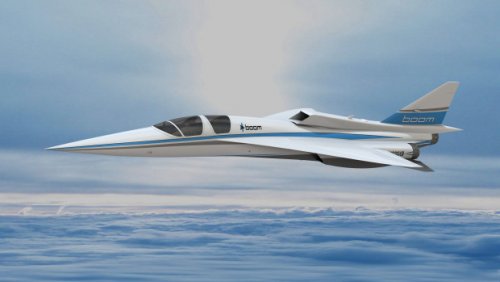Boom is also gearing up to begin assembly of its XB-1 “Baby Boom” supersonic demonstrator, a one-third-scale proof-of-concept vehicle that will pave the way for the airliner. The small delta aircraft, due to fly subsonic in late 2018 and supersonically in 2019, is powered by three General Electric J85-21 engines. Recently completed test work in the buildup to assembly includes completion of structural tests on a composite wing spar at temperatures and loads representative of the Mach 2.2 design cruise condition.
The evaluation was conducted in a specially developed hydraulic test rig in which the spar was subjected to load while being heated in an oven that enclosed the rig. Temperatures inside the test apparatus reached 300F, “which is well above the heat soak operational temperature,” says Scholl. Netherlands-based TenCate Advanced Composites, which provides high-temperature-resistant materials to SpaceX for the Falcon 9 rocket among other programs, is supplying an epoxy-based material system for cooler airframe parts and a higher-temperature-resistant material to handle the hotter stagnation temperatures at the leading edges and nose. On a standard day, the temperature of the latter is forecast to be about 307F.
The airframe will be primarily carbon/epoxy, with intermediate-modulus carbon fibers. Some high-modulus fibers are expected to be used on the wing spar caps, while bismaleimide prepreg will likely be used for the high-temperature leading edges and ribs. “The basic structure is pretty straightforward and we will be using fuel as a heat sink, so the environmental control system will dump the cabin heat into the fuel,” says Scholl.



